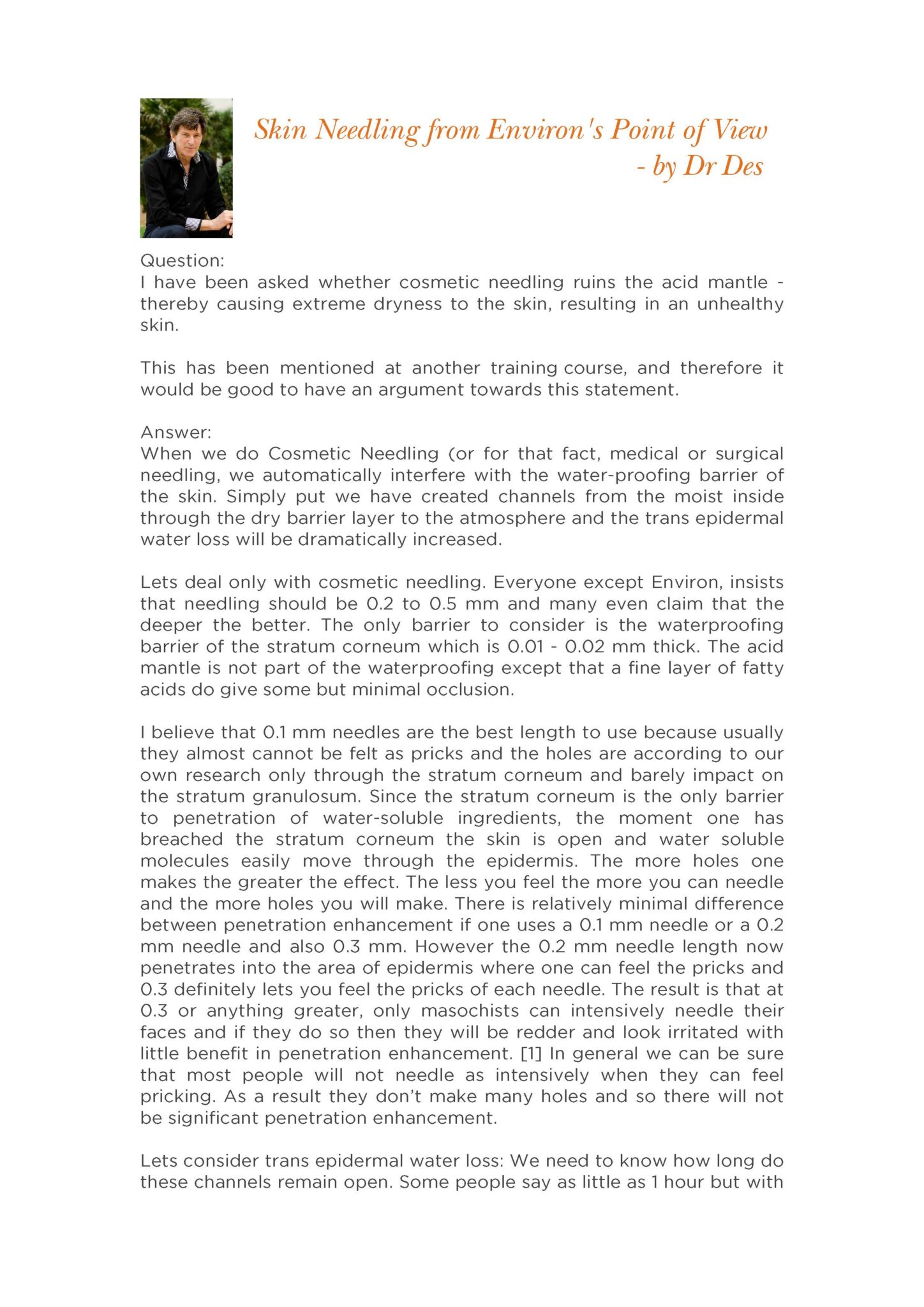What is skin needling?
Skin needling, also known as micro-needling therapy or collagen induction therapy (CIT), is a minimally invasive skin-rejuvenation procedure that involves pricking the blood vessels under the outer layer of the skin using a device containing fine needles.
The needles puncture the skin, creating a controlled skin injury. The procedure causes bleeding, releasing platelets (responsible for tissue regeneration and the build-up of collagen and elastin). Each puncture creates a channel that triggers the body to fill these microscopic wounds by producing new collagen and elastin. As a result, there is a significant improvement in skin texture, firmness, stretch marks, and pigmentation.
The earliest theories behind skin needling started with tattooing in the early 1990s. Tattoo guns were used without ink to treat surgical scars. Using these advancements, Dr Des Fernandes, invented and pioneered the first-ever skin-needling roller for treating wrinkles, introducing a stunned world at the International Society of Aesthetic Plastic Surgery (ISAPS) Congress in Taipei in 1996.
Identifying that tattoo needles were not deep enough, in some cases, the needle holes were too close together, he developed a roller fitted with 3mm-long needles to penetrate the skin safely and effectively. Since this invention, the practice of skin needling has grown dramatically with skin clinics offering the procedure and at-home devices gaining prominence in the market. There have been many others who have tried to replicate his devices, worldwide, however, Dr Des continues to be at the forefront of this skin treatment.
Skin needling is not without its critics, but Dr Des ensures that the procedure is not dangerous and its techniques have become internationally recognised as the safest, MOST EFFECTIVE way of treating lax skin, wrinkles, scars and stretch marks. What are the different types of Environ® Skin Needling and how are they different?
There are THREE different types of skin needling:
